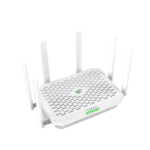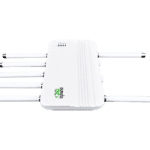
As the rollout of 5G technology accelerates, consumers and businesses are faced with new decisions about how to best harness this powerful network. Among these decisions is choosing the right type of equipment — 5G FWA (Fixed Wireless Access) or 5G ODU (Outdoor Unit). Each type offers distinct advantages and is suited to different environments and needs. In this blog, we’ll explore the key differences between these 5G devices, examining their design, performance, and ideal use cases to help you determine which is the best fit for your specific requirements.
What is 5G CPE?
5G Customer Premises Equipment (CPE) are devices used in fixed locations that connects to 5G networks to provide internet access. These devices are available in both indoor and outdoor units and can be connected either wirelessly or with wires.
Differences between 5G FWA and 5G ODU
5G FWA
5G FWA devices are designed for homes or offices to provide 5G connectivity to computers, smartphones, and smart home devices.
These devices often feature built-in Wi-Fi and LAN ports. Some include integrated support as a backup for older network standards like 4G LTE.
The 5G FWA aims to ensure a strong and stable 5G signal inside buildings where the signal commonly degrades due to walls and other structures. Solutions often involve using advanced antennas and sometimes external antennas that can be mounted on windows or outer walls.
5G ODU
5G Outdoor Units (ODUs) are typically installed on rooftops or high exterior walls to optimize signal reception. Designed for durability, these devices can withstand harsh environmental conditions such as rain, snow, and extreme temperatures.
The primary advantage of 5G ODUs is their ability to capture 5G signals with minimal physical obstructions, significantly enhancing connection quality and speed compared to indoor devices. However, installing 5G ODUs can be complex and may require professional assistance to securely mount the device and route cables indoors for connectivity.
Key Considerations for 5G Device Deployment
- Signal Strength
5G ODUs generally offer better performance in terms of signal strength and stability due to their less obstructed access to 5G signals.
- Physical Installation
5G FWA devices are generally easier to install and often manageable by users themselves. These devices are usually designed to be plug-and-play, placed in locations with good signal reception like near windows.
- Technical Requirements: No special tools or professional skills needed, allowing most users to install the device themselves.
5G ODU installation is generally more complex and may require professional teams to work at heights, such as on roofs or high on external walls.
- Technical Requirements: Professional tools are needed for securing the device, along with additional measures like waterproofing and cable routing.
- Device Capabilities
Both types of devices are required to support the specific 5G bands and frequencies utilized by the local network provider to ensure optimal performance and compatibility.
- For example, Verizon’s C-Band (n77) provides a balanced blend of performance and coverage. It extends a significantly wider range compared to high-band spectrums with the advantage of better building penetration, thus ensuring accessibility indoors. Moreover, it offers speeds that greatly surpass those of traditional low-band 5G, enhancing the user experience.
- On the other hand, T-Mobile’s n41 falls within the 5GUC band spectrum, which is crucial for achieving high speeds on 5G Sub6 devices. The n41 band is instrumental in delivering the high throughput required for bandwidth-intensive applications.
- Environmental Adaptability
Outdoor units need to be robust enough to handle local weather conditions, while indoor units need to effectively integrate with other home or office technologies. Thus, outdoor units often feature a higher IP level compared to their indoor counterparts.
In terms of operational temperature range, indoor devices designed for stable indoor environments typically feature an operational temperature range from 0°C to 40°C, suitable for most residential and office settings. In comparison, outdoor devices must be capable of operating in a wider range of temperatures, typically from -40°C to 60°C, to cope with various extreme weather conditions such as heat, cold, and other adverse elements.
So to sum up, whether to deploy an FWA or ODU can be decided from the following perspectives:
 |  | |
| Geräte Manager | 5G FWA | 5G ODU |
| Scenario | Indoor buidings | Remote outdoor locations |
| Signal Strength | Less strong signal | Better signal strength |
| Installation | Easy installation, plug and play | Complex, needs professional people and tools |
| Environement Adaptability | Lower IP protection level, narrower operation temperature range | Higher IP protection level, broader operation temperature range |
Schlussfolgerung
The choice between 5G FWA and 5G ODU typically depends on the specific needs of the user, including the physical layout of the premises, the local 5G network environment, and the specific application requirements. 5G ODUs are ideal for areas where indoor signal reception is poor, while 5G FWA devices are sufficient for areas with strong indoor signal penetration.